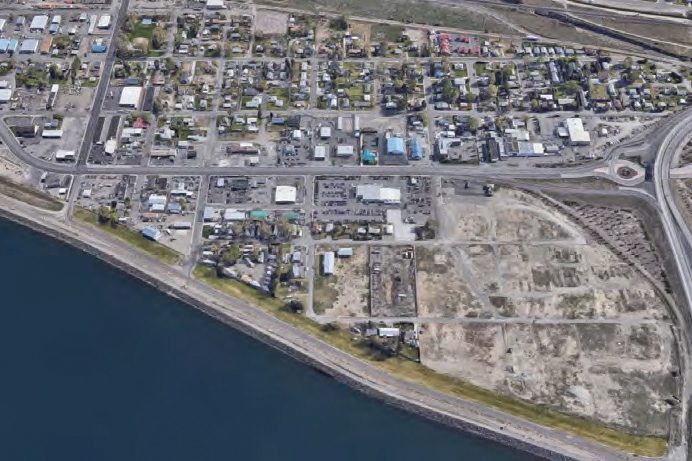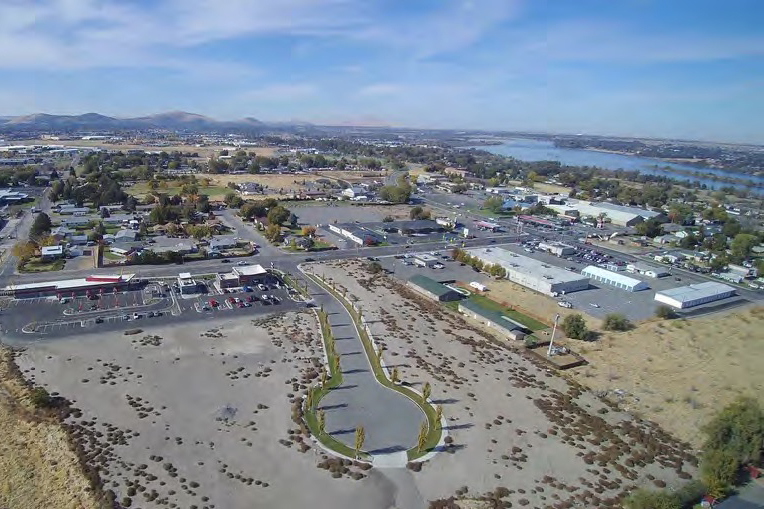
Home » Developers can reap tax benefits by investing in Opportunity Zones
Developers can reap tax benefits by investing in Opportunity Zones

December 16, 2019
Time is running out for investors looking to capitalize on
the first phase of incentives available to those wanting to develop or improve
land in the Mid-Columbia’s three Opportunity Zones.
“This is a great opportunity for local and regional
investors to sell existing projects and reinvest their gains, while eligible,
into quickly growing areas of Kennewick,” said Miles S. Thomas, economic
development manager for the city of Kennewick.
He’s helping spread the word on this relatively new tax
benefit awarded by the governor’s office in the third quarter of 2018.
The Opportunity Zone
program was created under new federal tax law that took effect in late 2017 but
couldn’t be used until the Department of Commerce gave direction on it the
following year. Even then, Thomas said, “No one knew how to use it. There was a
long time before there was enough information out there about how to invest the
capital gains.”
Under the new guidelines,
Gov. Jay Inslee designated three Opportunity Zones in the Tri-Cities – two in
Kennewick and one in Pasco – to incentivize developers to reinvest money earned
from capital gains into new projects in underserved or low-income communities.
These federally-mandated
benefits were provided with future job creation in mind.
“We don’t get these
incentives to develop very often,” Thomas said. “We’ve always just had light
incentives from a state perspective.”
As the 2019 tax year closes,
some investors may be looking to offset a potential hit from the capital gains
tax, paid when the sale of a property is more than its original purchase price
and the income gained is not reinvested into more real estate.
Sellers who have
qualified for a capital gains tax in the last 180 days could reinvest in a
project within an Opportunity Zone, allowing them to defer taxes on the
original capital gains owed for up to 10 years.
This includes a
10-percent abatement for investments made before the end of 2021, with a bonus
5 percent for those investments made before the conclusion of 2019.
Additionally, investors would not accrue new capital gains if the new
development or investment is sold after the initial 10-year holding period.

The two Opportunity Zones
in Kennewick allow for development at locations like Vista Field, downtown
Kennewick, Clover Island, Columbia Drive, Columbia Gardens Urban Wine and
Artisan Village and commercial portions on Edison Street and Clearwater Avenue.
In Pasco, the areas
include parts of downtown Pasco, the Port of Pasco’s Marine Terminal and Osprey
Pointe, Commercial Avenue and Heritage Industrial Park.
Gary Ballew, the Port of
Pasco’s director of economic development and marketing, said no projects have
been developed in Pasco’s Opportunity Zone so far.
“The incentive is still
there,” he said. “While it’s reducing, it hasn’t lost all of its impact.”
Ballew said Opportunity
Zones have raised interest, but projects still need to be profitable for an
investor to take a risk.
“People still want a
return on their investment,” he said. “If you’re an investor and you have
capital gains, Opportunity Zones are still a very useful tool.”
Benton County received
one nomination of a tract that could qualify as an Opportunity Zone, but the
second came through a competitive application process.
Thomas credited the
Tri-City Development Council for helping nominate the areas around Vista Field
and downtown Kennewick. This was especially important for east Kennewick near
West 10th Avenue and South Olympia Street where there isn’t a lot of vacant
land to build new developments, but a benefit that temporary and permanent jobs
could be created nearby.
“These are like community
centers compared to the rest of the nation,” Thomas said.
On a national scale, most
Opportunity Zones are found within industrial parks and usually within areas of
high poverty.
“People may not be as apt
to put their money into these areas of town,” Thomas said. The tracts
designated in Kennewick include 25 percent to 38 percent of the population
living below the poverty line and unemployment rates of 8.7 percent to 9.7
percent.
“Business owners looking
to retire or relocate their office can greatly benefit from investing in
qualified opportunity funds,” said Derek Moody, a certified public accountant
and audit manager for Blodgett, Mickelsen & Adamson P.S.
Moody said the most
significant benefit could be from holding onto an investment well into the
future, beyond the initial holding period.
“All the appreciation is
tax free, if you’ve done things right,” he said. “That’s quite possibly the
biggest benefit.”
Investments would include
tangible property like buildings, equipment, vehicles or land, but could not
include liquor stores, massage parlors or gambling operations, among others.
“You have to develop the
land. You have to invest in an improvement to qualify if you buy bare land,
creating temporary construction jobs,” Thomas said.
The city of Kennewick has
contacted several opportunity fund managers who might be interested in
developing multi-family residential units or commercial buildings or primary
care and urgent care offices. This includes Boise’s Galena Opportunity Fund,
which Thomas called “the biggest regional powerhouse to understand Opportunity
Zones.” The group develops in markets across the Pacific Northwest, inviting
investors to pool their money to get a larger return.
While Kennewick has not
seen any qualified Opportunity Zone projects, “we’re already seeing a lot of
reinvestment in the areas where the Opportunity Zone has been applied,” Thomas
said. He pointed to the $1.75 million invested in downtown Kennewick in the
last 18 months, including projects at Layered Cake Artistry, Players Sports Bar
& Grill and Esprit Graphic Communications. Plans for a $15 million luxury
apartment project also are underway in downtown Kennewick.
Thomas hopes active
developers will take note of the recent investments and consider additional
efforts to improve the area.
“For developers who have
finished a project and want to turn their project into something else, and are
anxious about selling it, this gives them an incentive to put it into
something,” Thomas said.
Kennewick and Pasco both
have waterfront property available in the zones. Kennewick is advertising more
than 30 acres available along the Columbia River east of the blue bridge, as
well as parcels within the wine village on Columbia Drive near Clover Island.
Across the river, the
Port of Pasco is pitching its land at the Marine Terminal, on the northeast
corner of the cable bridge, once environmental cleanup efforts are completed.
Osprey Pointe is also on the water in the port’s Big Pasco Industrial Center.
The port hopes to recruit master developers or those looking to move offices,
commercial or research and development facilities.
While little time remains
for the bonus returns that investors could have qualified for, prior to the conclusion
of 2019, future development could still qualify for a 10 percent abatement on
capital gains taxes. To take advantage of the benefits, those interested should
confirm a property is within the designated Opportunity Zone prior to
investment.
Local News
KEYWORDS december 2019




